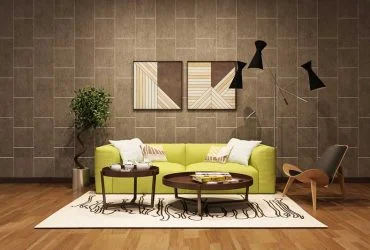Top 10 Benefits of 3D Rendering Technology
3D rendering, with its spectacular presentation technique, has proven to benefit several leading industries. Offering breathtaking imagery to their clients and visualizing future projects - in both these aspects, 3D rendered visuals are the best choice.
Most digital marketers, at present, strive to make a mark in the market with a competitive edge. And 3D technology gives them exactly that edge. Availing themselves of 3D-based visuals and product renderings, most of these industries are able to communicate clearly with their clients, partners, and stakeholders, and thus maintain the brand image required for the modern market.
This article will give in-depth details about the significant benefits these leading industries reap by adapting 3D rendering within their workflow. Read until the end, and you will get enough insights into the great potential this technology has for Industry 4.0 and beyond.
What is the 3D rendering process?
3D rendering is the digital process of generating a 2D image for a location, product, or scene within a 3D space. The process is done through advanced 3D rendering software. There can be numerous stylized 3D visualization renders.
These immensely engaging and hyper-realistic virtual representations have great versatility beyond what 2D images and visuals can offer.
Importance and advantages of using 3D photo-realistic rendering technology
Owing to its aesthetic versatility and multiple functions, 3D visualization has quickly become one of the primary marketing tools for businesses worldwide. When rendered, products can be viewed in full-scaled dimensions. As well as can be enhanced with real-world simulations and effects. This creates a more immersive experience for customers or prospects.
On top of that, 3D visualization is also much more cost-effective than traditional photography. Be it:
- Product photoshoots
- Real estate photography
- Home staging photography
- or anything else, creating a 3D-rendered scene digitally is detailed, and low-cost. In conventional photography and photo sessions, a lot of costs are involved.
This includes actual furniture items, physical product prototypes, light arrangements, logistics, etc. Moreover, arranging for professional photographers who charge massively.
More so, there’s no guarantee whether the pictures will look good on the website or not. The light and shadow can be improper, a need to change the backdrop can arise, and so on. The beauty of 3D technology is, all of these iterations can be done within the software in just a few clicks.
In short, it has opened newer potentials for several businesses to market their products most memorably. Keep scrolling, and you will find further details of the various benefits of 3D CGI rendering.
What are the benefits and usages of 3D CGI Rendering Technology?
Let’s take a quick glance at the major business benefits of computer-generated 3D imagery. As mentioned earlier, all these advantages are beyond the competency of 2D graphics. Hence, the rendering technology has gained such massive popularity among new-age eCommerce marketers.
Hope by the end of this article, readers will have a complete idea of the usage and applications of 3D CGI images. And how the renders can be leveraged for better product listings and as marketing materials.
-
Perfect light and shadow
As the entire 3D rendering process is software-generated, the outcome always has the perfect balance of light and shadow. It is further embellished by an aesthetic warm light effect throughout. All these effects can be created earlier in the 3D modeling process or can be digitally incorporated later.
However, with traditional photography, photographers often have to struggle with proper lighting. Moreover, any changes to be made imply another session of photoshoots costing extra production costs.
-
Flawless multi-angled view
3D-rendered visuals have 360° views, i.e., from all the angles. These visuals can be integrated within the website or eCommerce platform, and prospects can rotate them per their wish. This helps to interact more with the product and explore them from all angles.
With 2D pictures, this functionality is missing. Each angle remains static in a 2D flat image, which doesn’t offer the dynamic functionality 3D product spins have.
-
Endless lifestyle backdrop settings
3D renderers can create unlimited numbers of creative background renditions with 3D models. Everything happens digitally in specialized 3D software with a few mouse clicks. Renderers can also use the same 3D assets over and over again with multiple variations.
Therefore, it’s much easier than to create multiple backgrounds physically.
-
Faster editing process
With previews, production designers can see the exact places where iterations are required. This greatly speeds up the post-production process. They can make the edits, envision a concept, apply and take a preview, and then again review it in minutes instead of weeks and days.
This increases production efficiency as well as makes the turnaround time faster.
-
Identifying potential flaws
During the production and development phases, 3D-rendered visuals give detailed clarity into the product in the making. Product designers can identify potential flaws in the design before the final production. Thus preventing exuberant losses and dangers in the future.
This is one of the biggest advantages of 3D renders businesses can avail themselves of.
-
Accuracy in sizes and measurements
3D designs give an accurate size with realistic depth. The visuals are rendered in actual scaled-up versions, thus replicating the exact dimensions and measurements. This tremendously helps prospective customers get a detailed understanding of the product. As a result, they can make more informed purchase decisions.
2D visuals are flat and devoid of realistic depths, which doesn’t let customers get the full-size-related information about the product.
-
Branding consistency
Professional 3D modeling artists and renderers can create 3D assets branded per a company’s guidelines. They can further use these same assets around multiple renderings. This includes the brand color theme, font, typography, logo, hallmark, etc.
However, with product photography done traditionally, all these elements need to be produced from scratch every time a photo is snapped. This is ultimately an extra expense.
-
Faster decision-making
Braced by the rendering technology, production designers can create tailored outcomes. This allows all the stakeholders get a faster preview of the final product and take their call. If any creative tweaks are required, the team can make them right away with limitless simulations and perspectives.
This reduces workload and extra production costs. Besides helping the stakeholders in faster decision-making.
Conclusion
So you see, 3D rendering technology comes with spectacular scopes that can be well utilized for modern-day businesses. Several mainstream industries and sectors are already implementing the technology within their operations. Be it IT, product manufacturing brands, or real estate, fashion, and healthcare - 3D visualization can cater to all unique needs.
Hope this article gave you all the reasons to leverage the enormous potential of 3D technology. Also, the insights to enhance your marketing and promotions with 3D-rendered visuals. If you want to get the best 3D solutions and services, reach out to the best professional 3D services providers.
These expert agencies, having a fleet of experts and access to the latest software. They can offer the best quality 3D rendering services at an affordable cost and fast turnaround time. So, team up with a professional agency today! Let them deliver world-class 3D visualizations that can drive phenomenal growth to your brand. Eventually establishing you as an industry influencer. Good luck!



